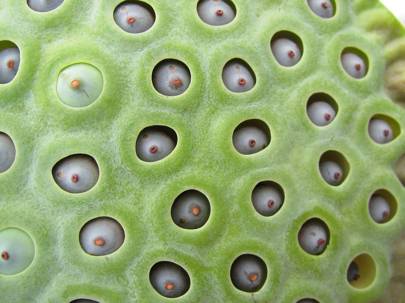A phobia is described by the NHS as an overwhelming and debilitating fear of an object, place, situation, feeling or animal.
They are more pronounced than fears and tend to develop when a person has an exaggerated or unrealistic sense of danger regarding a situation or object.
If a phobia sufferer doesn't come into contact with the source of their problem very often it may not affect their life - although in some cases even thinking about the thing they fear can give a person "anticipatory anxiety".
If a phobia becomes very severe, the person suffering may organise their life around avoiding the aspect that’s causing distress.
WHAT IS TRYPOPHOBIA?
Trypophobia, or the fear of small holes, may be linked to deep-seated fears of illness and parasites, according to a new study.
Look at a bubble. Round, aerated, generally mysterious. But when do bubbles become nauseating?
From bubbles in a hot cup of coffee, to holes in
a sponge or plaster, while the common appearance may seem innocuous it
has been known to trigger intensely anxious responses. And that response
has a name: Trypophobia.
Previous evidence suggested that the fear of bubbles stemmed from the clusters of round shapes found on poisonous animals, such as snakes and the blue-ringed octopus. But a new theory from psychologists at the University of Kent suggests our innate suspicion of rough circular shapes could, in fact, be linked to a history of human illness.
SYMPTOMS:
- dizziness,trembling and increased heart rate
- breathless
- nausea
- a sense of unreality
- fear of dying
 **Warning, this post contains images which might cause feelings of intense disgust. All images were collected as part of the University of Kent's study into trypophobia*
**Warning, this post contains images which might cause feelings of intense disgust. All images were collected as part of the University of Kent's study into trypophobia*
No comments:
Post a Comment